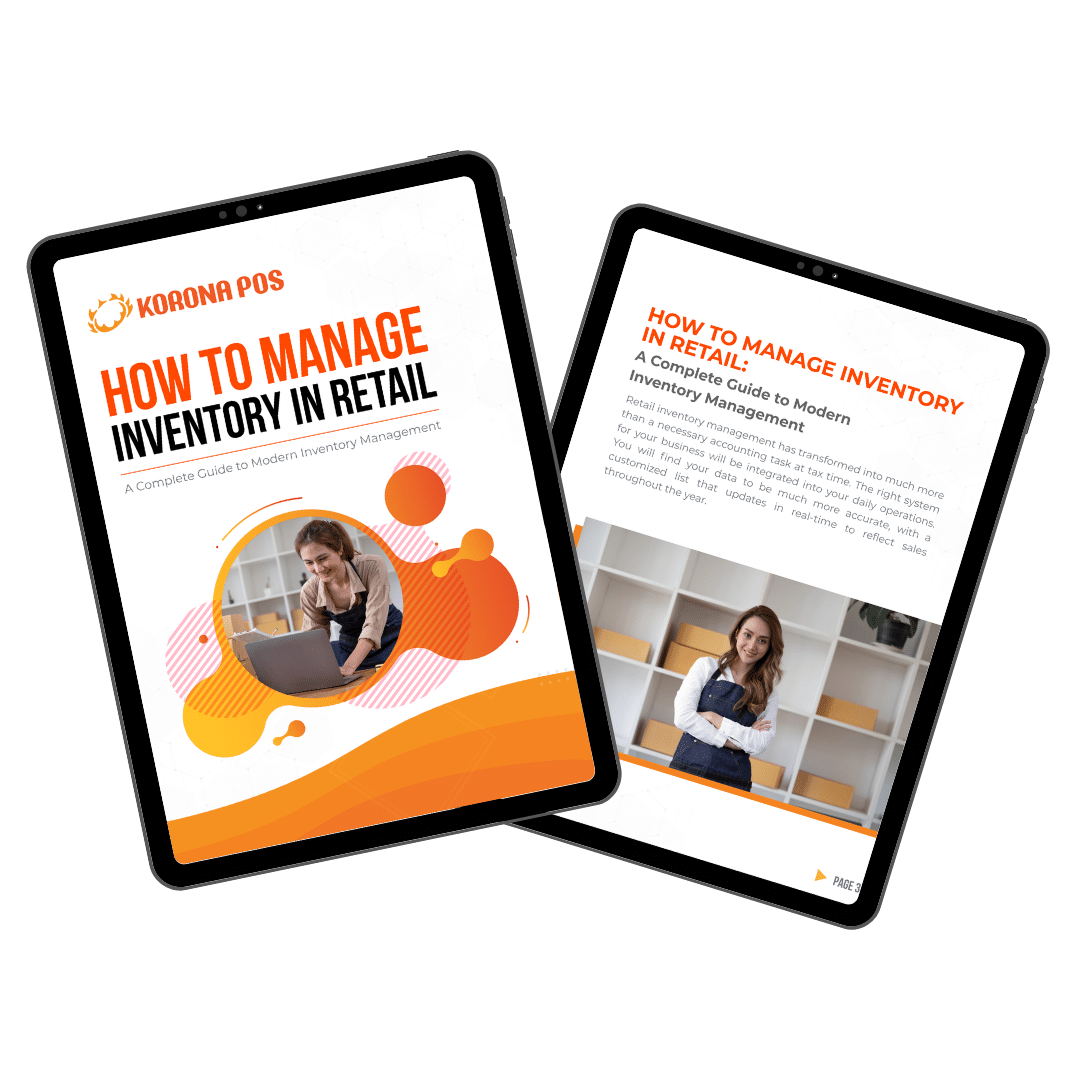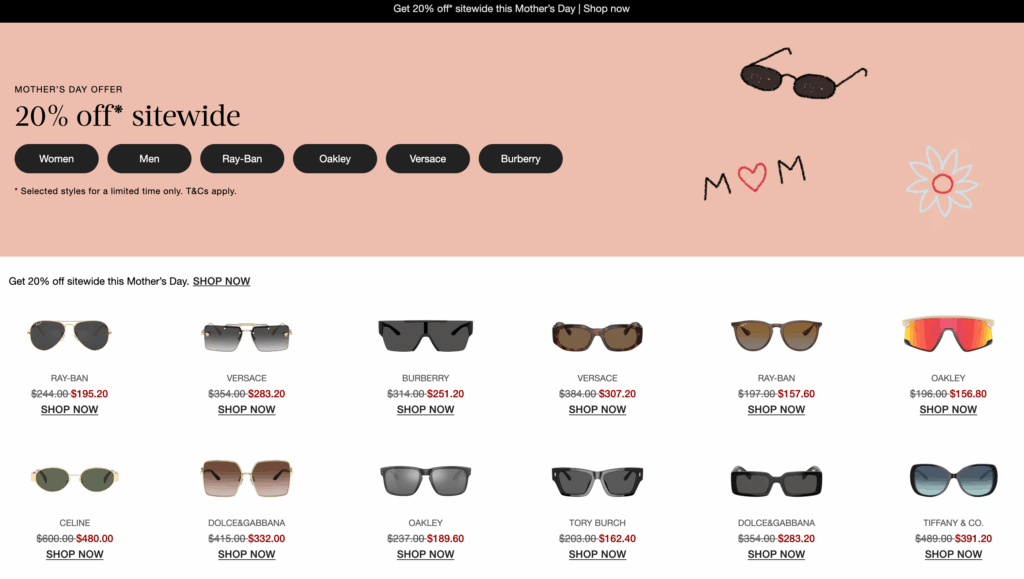? Key Takeaways:
- ?️ Assortment planning ensures the right products are available at the right time, place, and quantity to meet customer demand.
- ⚖️ It balances variety and depth by selecting the optimal mix of product categories, styles, sizes, and price points.
- ? Data-driven insights guide decisions, using sales trends, customer preferences, and seasonal factors.
- ? Effective planning boosts sales and reduces excess inventory, improving profitability and customer satisfaction.
Assortment planning is about selecting the right products and ordering the right quantities to meet market demand at the right moment.
This article will provide specific examples of the different assortment planning strategies. You’ll also learn how KORONA POS, a retail POS system, can help you streamline your inventory and assortment planning process.
What Is Assortment Planning In Retail?
Assortment planning is a process that retailers use to decide what products to sell during a particular time of year. In other words, assortment planning helps retailers know what products to sell and where to sell them based on seasonality and demand at specific locations.
Retailers consider several factors when developing assortment planning. Product type alone is not enough to meet customer demand during a given period. They also consider size, color, price, and SKU numbers.
For example, a store based in Florida may carry swimwear year-round, while it is only sold seasonally in Alaska.
A clothing company may sell swimsuits and breathable fabrics during the summer but change to sell fleece jackets, boots, during winter. Assortment planning is also performed differently depending on the store’s location.
When To Consider Assortment Planning?
Assortment planning is something every retailer, whether you run a small boutique or a multi-location store, needs to think about more intentionally as your business grows. But when should you start prioritizing assortment planning?
Here are some key moments and factors to consider:
Reason #1: Product Selection Feels Random or Overwhelming
If your store feels cluttered or disorganized or you’re getting feedback like “You have a lot, but not what I’m looking for”, it’s a sign your assortment needs more focus. Customers want choice, but not chaos. Assortment planning helps you narrow options to what truly sells and aligns with your brand.
Reason #2: Expanding or Opening a New Location
Whether it’s your first or third expansion, every location might serve a slightly different audience. Assortment planning ensures you tailor your product mix to the neighborhood, foot traffic, and local preferences rather than copying and pasting your existing store’s setup.
Reason #3: Too Much Dead Stock
If dead stock or obsolete stock becomes a theme at your retail store, it’s a sign that you need better assortment planning. If you notice specific categories rarely move or you constantly have to mark them down, it’s time to revisit your assortment strategy. Planning helps you invest in what turns over. It will help you plan your inventory investments more accurately and avoid investing in products selling slowly or in low demand.

Reason #4: Sales Are Seasonal or Trend-Driven
Fashion, beauty, specialty food, and gift shops experience intense seasonal swings. If your sales rise and fall dramatically, you need a clear plan for what to stock and when to rotate it out. Smart assortment planning helps you capitalize on trends without overcommitting.
Reason #5: Improve Margins or Sell More High-Value Items
Not all products are created equal. Some have better margins, others draw people in the door. With assortment planning, you can shape your product mix to focus more on profitable items while still carrying enough variety to satisfy different price points.
Reason #6: Building a Stronger Brand Identity
Your product assortment says a lot about your business. If you’re trying to become known for curated, high-quality goods, or want to be the go-to place for specific items, your mix needs to reflect that. Assortment planning helps you build consistency and customer trust.
Reason #7: Investing in eCommerce or Omnichannel Sales
Selling online introduces new complexity. You might not want to list every item in-store, and you’ll need to consider shipping sizes, stock visibility, and cross-selling. A tight assortment makes your online store easier to manage and more appealing to browse.
Reason #8: Making Data-Driven Decisions
Once you’re regularly reviewing sales reports and tracking KPIs like sell-through rate, stock turnover, or gross margin return on investment (GMROI), it’s time to start planning your assortment with purpose. Good data should guide what you keep, cut, or test.
Reason #9: Insufficient Storage Space
Not having enough space to store all your products can become a real problem as your business grows. With assortment planning, it is possible to strategically plan inventory based on your storage capacity and available shelf space to make the most of your retail store space.
Reason #10: Permanent Stockouts
Stockouts are just as much of a concern as dead stock. When you run out of certain products regularly while demand is still high, you need to improve your assortment planning so that you don’t have to restock products frequently to keep up with sales volume.
Reason #11: Uncontrolled SKU Proliferation
While SKU proliferation is essential to growth, offering too many SKUs can reduce your profits. Assortment planning lets you rationalize SKUs, control inventory sprawl, and focus your investments on the most profitable items.
How To Plan a Successful Assortment Planning?
Assortment planning requires a straightforward process and can be a bit daunting. Before you start, ensure you understand the following best practices for assortment planning.
Here are a few of them:
Leverage data from your POS software for more informed decision-making
Assortment planning is an essential part of inventory management. And for this, accurate data is necessary to avoid making the assortment planning process a pure guessing game. Incorrect data can lead to ordering more or less inventory, which can hurt your bottom line.
The most critical data central to your assortment planning efforts is data on customer demographics, seasonal trends, and product performance.
The data allows you to make thoughtful and logical decisions about what products to order and stock, where to sell them, and when they are best sold.
Below are some of the most relevant metrics to track for assortment planning:
- Inventory turnover rate
- Historical sales data
- Lead times
- Cost per unit for each SKU
- Revenue per unit for each SKU
- Conversion rates
- GMROI reports
- Sales rates
Access to this data means using a sophisticated retail POS that can provide you with the sales reports you need in real-time to make decisions. Point of sale reports are an essential tool for retail point of sale systems. Reports detail sales, staff performance, inventory, profit margins, and more.
Each of these elements can be fully customized to meet your business needs. Sales reports, including gross margin, sales rates, sales per square foot, average customer spend, conversion rates, turnover rates, returns/refunds, and gross margin ROI, will be paramount to you in assortment planning.
Set realistic goals
Even the most well-thought-out assortment plan can result in stockouts, as customer demand and sales trends are unpredictable. Therefore, your goal should not be to create an assortment plan that perfectly predicts demand but to create a practical and achievable plan that fully utilizes your store’s data.
If you are new to goal setting, review your previous retail analyses to determine benchmarks and growth trends. Set smaller goals, such as optimizing product selection for a single product category or better sales for a site or sales channel.
Take into account the product hierarchy
The product hierarchy, or the customer decision tree (CDT), is the principle customers use to evaluate products in the same category.
For example, let’s say you sell men’s shoes. A customer may enter your store to buy a new pair of shoes. When he heads to the sneaker aisle and browses the options, he will first look at the brand, color, and size.
Your assortment planning should reflect this product hierarchy and guide customers. Because every customer is different, there are many ways to reach a final purchase, and other buyers may have a different CDT for the same product.
Leverage cross-merchandise
Cross-merchandising is a visual merchandising strategy that involves displaying complementary products next to each other. It is effective because it allows you to target in-store promotions based on product affinity.
Cross merchandising makes the shopping experience more convenient for your customers and can inspire ideas or remind them of additional items they need.
A better way to know which products to place next to each other is to check your store’s sales history to see which products are often purchased in the same transaction. When appropriately executed, cross-merchandising can increase sales and average order value.
Use the high-low pricing strategy
To balance your assortment through pricing, you can also adopt the high-low pricing strategy that Ulta Beauty is known for. The brand offers a variety of affordable yet luxurious skincare items, allowing shoppers to choose from a wide range of products.
Types of Assortment Strategies And Examples
Assortment Strategy | What It Means | Example |
Wide Assortment | Offers a broad variety of product categories to attract diverse customers. | Walmart offering groceries, clothing, tools |
Deep Assortment | Provides many options within a single product category for specialized needs. | Foot Locker with many types of sneakers |
Localized Assortment | Tailors product selection to regional or local customer preferences. | Target stores in Miami selling beachwear |
Scrambled Assortment | Combines unrelated product categories to maximize convenience or sales. | Pharmacies selling snacks and electronics |
Mass-Market Assortment | Focuses on high-demand, universally appealing products for a broad audience. | Costco bulk items for general consumers |
Narrow Assortment | Limits product variety to focus on specific niches or high-quality offerings. | Sunglass Hut focusing only on eyewear |
Broad Assortment | Balances variety across categories without deep specialization. | Supermarkets carrying food, hygiene, tools |
Horizontal Assortment | Expands product variety at the same price or quality level across categories. | Zara’s range of mid-priced fashion styles |
Vertical Assortment | Offers products at varying price points or quality levels within a category. | Apple Store with entry to premium devices |
A company can use several assortment planning strategies. As aforementioned, these strategies are primarily based on depth and breadth.
Here are some examples of standard assortment models.
Wide assortment

A wide assortment strategy is used when retailers aim to offer many different product lines or categories but with less depth within each category. For example, a convenience store offering many other products but only stocks one or two brands for each type uses a broad assortment strategy.
Deep assortment
A deep assortment strategy proposes many options in a given product category. This strategy is common for specialty stores that focus on a few products.
For example, a supplement store will likely offer many options to protein powder shoppers. They use a deep assortment strategy by focusing on fewer product lines but with high depth and variety within each product line.
Localized assortment
A localized assortment strategy allocates the product line based on the local population’s preferences and the geographic area’s characteristics. The strategy allows the retailer to satisfy different demands based on geography, thereby increasing sales.
A clothing retailer like Zara does not sell the same clothing inventory in a store in Mumbai, India, as it does in Vancouver, Canada. Vancouver’s population needs warmer clothing for snow and winter, while India has different clothing preferences and needs.
Scrambled assortment
When a company has a scrambled assortment, its product line diversifies to include products outside the core categories it previously offered. Retailers using scrambled assortment strategies aim to provide products outside their core business to attract more customers from different markets.
For example, a store known for its smoothies starts selling fresh fruit and packaged foods, allowing it to target a broader audience, including people who want to make smoothies at home.
Mass-market assortment
Mass assortment strategies address the mass market by offering as many product categories as possible and a wide selection of items in each category. Stores with large physical storage capacities, such as Walmart and Amazon, use this strategy.
Narrow Assortment

Narrow assortment focuses on limited, high-quality, or niche products. A boutique like Everlane offers a curated selection of sustainable clothing. This builds brand loyalty among specific audiences but limits market reach.
Broad Assortment
A broad assortment provides moderate variety across multiple categories without deep specialization. Kohl’s offers clothing, home goods, and accessories at accessible prices, which balances appeal and manageability but may not satisfy niche demands.
Horizontal Assortment
Horizontal assortment expands variety at the same price or quality level across categories. H&M offers diverse clothing styles at affordable prices. The horizontal assortment attracts budget-conscious shoppers but requires consistent quality control to maintain trust.
Vertical Assortment
Vertical assortment offers products at different price points or quality levels within a category. For example, in one store, Apple sells older iPhones, newer models, and premium Pro versions. It captures varied budgets but demands clear branding to avoid confusion.
Best Practices for Improving Assortment Strategies in Retail
Optimizing your retail assortment strategy ensures you meet customer needs, maximize sales, and minimize waste. Below are actionable best practices tailored for retailers and small business owners to refine their product assortment, grounded in consumer behavior, technology, and data-driven decision-making.
Practice #1: Align Assortment with Consumer Behavior and Market Trends
Analyze purchasing patterns, seasonal demands, and emerging trends to understand customers’ preferences. Use point of sale data and customer feedback to identify top-selling products and gaps in your offerings.
Platforms like KORONA POS offer real-time insights into sales trends, helping you plan assortments with precision. With KORONA POS, you can automate data analysis to reduce manual errors and make informed decisions about product variety and stock levels.
Speak with a product specialist and learn how KORONA POS can power your business.
Practice #2: Balance Variety with Demand Forecasting
Too much variety can overwhelm customers and tie up working capital. Use demand forecasting models to stock your best-sellers consistently while testing new products in small batches. Maintain a core assortment that drives profit, then rotate complementary or seasonal items based on predictive data.
Practice #3: Review and Refresh Assortment Regularly
Your product mix shouldn’t be static. Set regular cadence (monthly or quarterly) to assess performance metrics like turnover ratio, gross margin return on investment (GMROI), and stockout rates. To stay competitive and agile, eliminate low performers and replace them with trending or complementary items.
Practice #4: Use ABC Analysis to Prioritize Stock
Segment your inventory using ABC analysis:
- A-items are high value, low volume (top sellers),
- B-items are moderate, and
- C-items are low value, high volume.
Focus your assortment decisions and resources on A-items while controlling the costs and space occupied by C-items.
Practice #5: Localize Your Assortment by Store Location
If you operate multiple locations or sell online and in-store, tailor your assortment to local customer preferences. Weather, demographics, and cultural differences affect buying habits. Geo-specific assortment planning boosts conversions and prevents overstocking the wrong products in the wrong places.
Practice #6: Strengthen Supplier Relationships
Better supplier partnerships enable more flexible ordering, faster restocks, and improved access to exclusive or trending products. It can help you respond to demand shifts more quickly without overcommitting capital. Regular communication with vendors can also lead to collaborative planning and better pricing.
Practice #7: Test and Scale New Products Cautiously
Before fully committing to new SKUs, run small-scale tests in select locations or for limited periods. Monitor sell-through, customer reactions, and margins. If they perform well, scale up.
Inventory management a headache?
KORONA POS makes stock control easy. Automate tasks, generate custom reports, and learn how to improve your business.
Challenges in Assortment Planning and How to Overcome Them
Achieving the right balance between variety, depth, and profitability is complex and riddled with challenges. Below are some of the most common challenges in assortment planning and strategies to overcome them.
Challenge #1: Inadequate Data Integration and Visibility
Challenge:
Retailers often rely on multiple, disconnected systems—POS, ERP, CRM, and eCommerce platforms—that create silos of data. Without a unified view, it’s difficult to assess which products perform well across regions or customer segments.
Solution:
Implement centralized inventory and data analytics platforms that consolidate information across channels. Use advanced analytics and AI to derive actionable insights from historical sales, customer preferences, and inventory turnover.
Integration with POS systems that offer real-time data, like KORONA POS or Lightspeed, ensures accurate visibility across all sales touchpoints.
Challenge #2: Misalignment with Consumer Demand
Challenge:
Predicting what customers will want in the future is inherently difficult. Offering too much variety leads to excess inventory and markdowns, while too little results in stockouts and missed sales opportunities.
Solution:
Use predictive analytics and demand forecasting tools to base decisions on historical trends, market conditions, and seasonal patterns. Consider customer personas and buying behaviors to tailor assortments for each location or demographic. Regularly revisit and adjust assortment strategies using A/B testing to stay aligned with evolving customer preferences.
Challenge #3: Lack of Localization and Channel-Specific Strategies
Challenge:
Applying a one-size-fits-all approach across multiple stores or channels can result in poor product performance. What sells well in one region might underperform in another due to climate, culture, or lifestyle differences.
Solution:
Adopt a localized assortment strategy. Segment stores based on geographic, demographic, and psychographic factors and tailor product selections accordingly. For omnichannel retailers, differentiate assortments between online and physical stores while maintaining brand coherence. Use geolocation and store-level data to refine the mix.
Challenge #4: Supplier and Lead Time Constraints
Challenge:
Long lead times, unreliable suppliers, or limited manufacturing capacity can hinder the ability to quickly adjust assortments based on real-time sales trends.
Solution:
Build flexible supplier relationships and diversify sourcing to mitigate risk. Maintain safety stock for high-performing SKUs and use just-in-time inventory principles for low-performing or trend-based items. Collaborate with suppliers using shared demand forecasting models and real-time sales data to reduce replenishment delays.
Challenge #5: Space and Budget Constraints
Challenge:
Retailers face physical (shelf space) and financial (inventory budget) limitations. Overcrowding shelves with too many SKUs can confuse customers and increase operational complexity, while tight budgets restrict the ability to stock diverse products.
Solutions:
Use planogram software (e.g., JDA Space Planning, Nielsen Spaceman) to design shelf layouts that maximize product visibility and sales per square foot. Offer a broader assortment online to complement in-store limitations. For example, a retailer might stock core products in-store but provide access to niche items via an online marketplace or ship-from-store model.
Differences Between Assortment Planning and Merchandise Planning (HERE)
Merchandise planning is the broader process that looks at what categories or departments you’ll invest in based on sales goals and market trends. Assortment planning, however, dives deeper into the specific products, sizes, colors, or styles within those categories to satisfy customer demand.
While assortment planning is tactical, merchandise planning is strategic, aligning with financial objectives.
Here’s a quick breakdown:
Feature | Merchandise Planning | Assortment Planning |
Scope | Broad (category/department level) | Detailed (SKU or product level) |
Focus | What to sell | Which specific items to sell |
Goal | Maximize sales and margin | Meet customer preferences more precisely |
Frequency | Seasonal or annual | More frequent, based on trends or data |
Based on | Historical sales + forecasts | Local demand, trends, and preferences |
Level | Strategic, high-level | Tactical, detailed |
Top Goals Behind Assortment Optimization in Retail
This section outlines four primary goals maximizing sales and revenue, enhancing customer satisfaction and loyalty, optimizing inventory efficiency, and increasing profit margins. It’ll also explain their importance and how retailers pursue them.
Maximize Sales and Revenue
Assortment optimization in retail is about strategically selecting the right mix of products to drive business success while keeping customers happy.
One primary goal is to maximize sales and revenue. By analyzing sales data, customer preferences, and market trends, retailers can stock high-demand products and eliminate underperforming ones.
For instance, a grocery chain might focus on top-selling cereal brands and sizes while phasing out niche flavors that don’t move, ensuring shelves are filled with items customers are most likely to buy, which boosts overall sales.
Enhance Customer Satisfaction and Loyalty
Another key objective is enhancing customer satisfaction and loyalty. A well-curated assortment aligns with what shoppers want, making their experience more enjoyable and encouraging repeat visits.
Retailers achieve this by tailoring offerings to local or demographic preferences, such as a fashion retailer stocking lightweight clothing in warmer regions or specific sizes that match the customer base. When customers find what they need consistently, they’re more likely to return, building long-term loyalty.
Optimize Inventory Efficiency
Optimizing inventory efficiency is also critical. Retailers aim to balance stock levels to avoid overstock, which ties up capital and risks waste, or stockouts, which lead to lost sales. Using predictive analytics, businesses can align inventory with demand forecasts.
For example, a hardware store might reduce excess seasonal items like snow shovels by forecasting demand based on weather patterns, ensuring inventory moves efficiently.
Increase Profit Margins
Finally, assortment optimization seeks to increase profit margins. Retailers can boost profitability without sacrificing variety by prioritizing high-margin products, such as private-label brands.
It involves carefully balancing the assortment to remain competitive while focusing on items that deliver better returns.
For example, a retailer might promote its own branded products alongside popular name brands, subtly shifting the mix to favor higher-profit items while still meeting customer expectations.
Implementing An Assortment Planning Process With KORONA POS
KORONA POS is a point of sale and inventory management software specifically designed for retail businesses such as convenience stores, liquor stores, vape shops, etc. KORONA POS has assortment functionality in addition to its usual product group functionality.
It provides reports that allow you to filter by merchandise group and assortment, and be very specific about the type of data you want to examine. You can analyze popular order destinations to optimize inventory allocation, track inventory turns and sales history, and better plan for vacations and peak shipping seasons.
You can even assign products to assortments individually or when creating products. You can also use the bulk product editor or custom data importer to modify the variety of many products.
The more I learn to use KORONA POS, and with the help of awesome customer support, the more I believe this POS system could be a very good fit for many types of businesses. What I love the most about this software is the 24/7 customer service and reporting functions, which are very easy to use.
-Kevin L.
The software can analyze your products and generate assortments based on sales/order factors through assortment clean-up. To learn more about the assortment functionality of KORONA POS, click on the button below for a demo with one of our product specialists.
FAQs: Assortment Planning In Retail
1. How Can Assortment Planning Software Benefit Retailers?
Assortment planning software helps retailers optimize product mix by analyzing customer demand, sales data, and market trends, leading to better inventory decisions, increased sales, reduced stockouts or overstock, and improved customer satisfaction.
2. Why is assortment planning important?
Assortment planning is important because it allows companies to make a profit by meeting a specific demand from their customers. In addition, when companies increase their inventory, they have limited space for storage. Assortment planning allows the company to choose the most advantageous product options for their business, free up space, and avoid dead stock or excess inventory.
3. What are the four characteristics of product assortment?
The product range’s four characteristics are width, length, depth, and consistency.
4. What is product assortment strategy?
A product assortment strategy is a plan to help retailers define the products to feature and sell on their channels. There are several assortment planning strategies such as wide assortment, deep assortment, localized assortment, scrambled assortment, and mass-market assortment.













